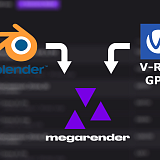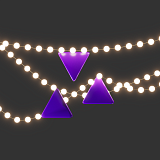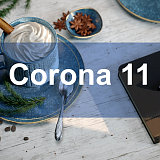Corona Renderer 7 has finally been released, the developers announced it in a blog post describing all new features on the official website. The new version offers many nice improvements. However, the main focus of the release has been realism improvement and rendering time reduction. Here is a general overview of the new and updated features.
Make everything faster
The developers promised a noticeable increase in rendering speeds, as is shown in the original blog post. A new system of clearing the image has been introduced, where rendering is happening in 32x32 pixel blocks. This gives a 5-15% boost to rendering speeds and doesn’t change the visual experience yet optimizes the behind-the-scenes processes. Denoising has become faster too with the usual time taken, reduced by 20%. Transparency and Absorption effects are now calculated more efficiently, and therefore at least a third faster too. Finally, the scenes are opening much quicker now, as the textures and maps are loaded asynchronously, letting you start working on the project without waiting for them to open.
Materials upgrade
Corona 7 introduces new Physical Material and the improved support of PBR workflow, Specular is now replaced with more realistic Metallness options, and a long-awaited feature has been added: Clearcoat. This allows the creation of a single material for objects that previously required the use of layers. Fabrics are now easier to create thanks to the Sheen option. Glass material has been improved and performs much better when working on roughness, reflections, and casting shadows. The default Physical Material got 35 presets to make it easier to create custom shaders from scratch.
Corona Sky improvement
A major change was made to the Improved Sky, first introduced in Corona 6. Now it is called the PRG Clear Sky model, and its functionality has expanded. New Volume Effect, previously possible only with secondary geometry and materials, creates realistic fading of distant objects as if obscured by the atmosphere. Using this effect also improves the rendering speed, as the obscured geometry won’t have to render for as long as it did before. The Altitude parameter adjusts the visuals depending on the height of the camera. This is a natural change that appears in the atmosphere, depending on its thickness. And can now be replicated with just one value. The new settings also include Turbidity and Horizon Blur.
At Megarender, we’ve already started testing Corona 7 at our render farm. Once we are sure of its stability, we will make it available for use. For now, we support Corona Renderer versions 1.7 to 6.2 for 3DS MAX and Cinema 4D.




